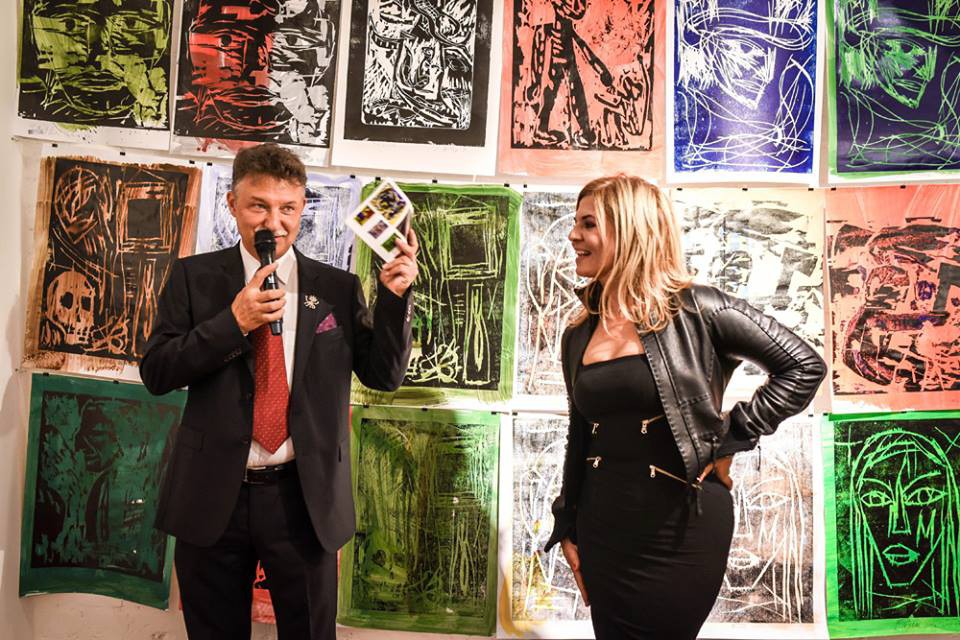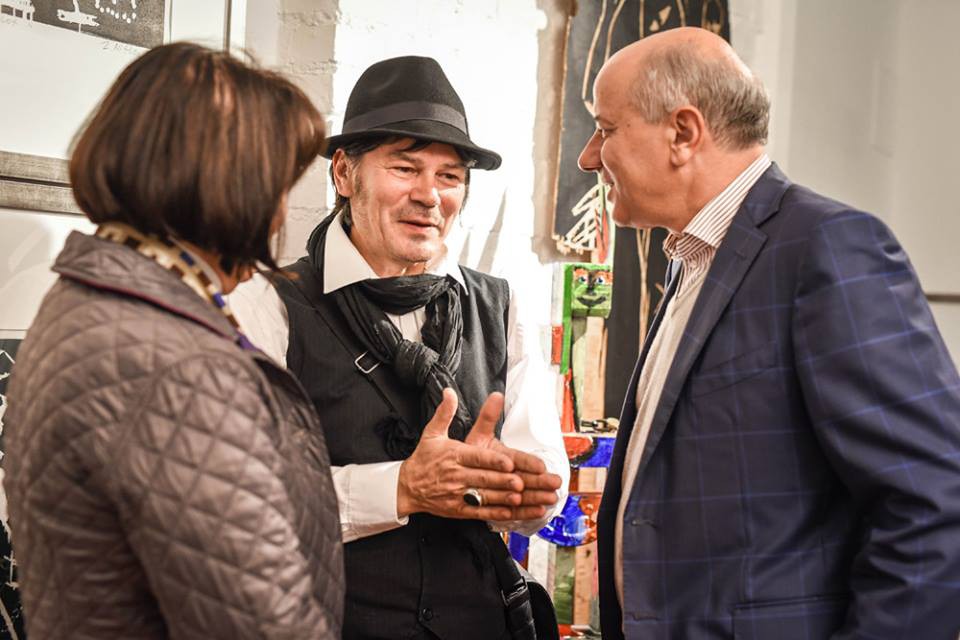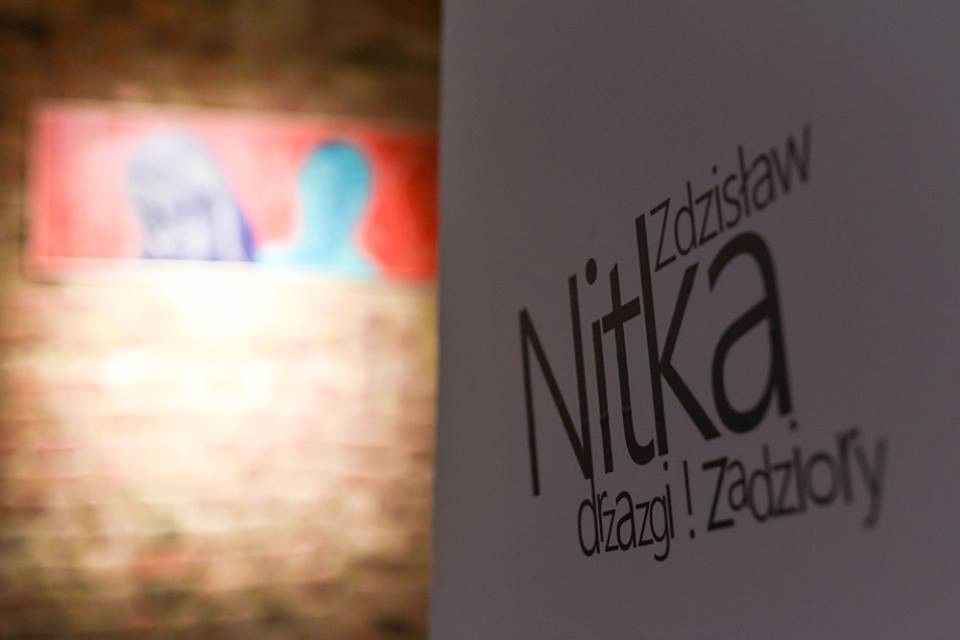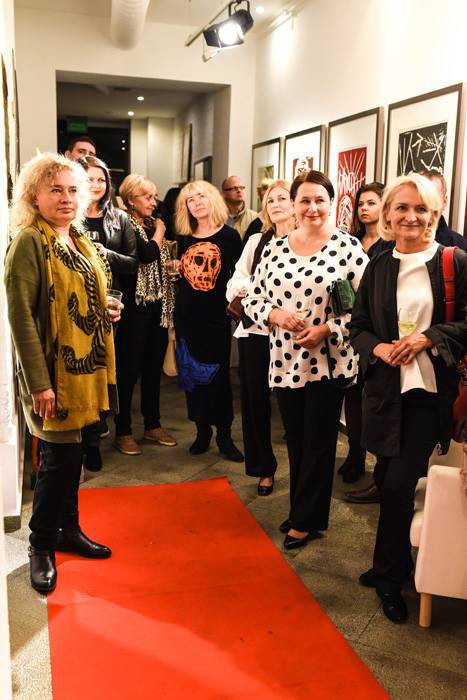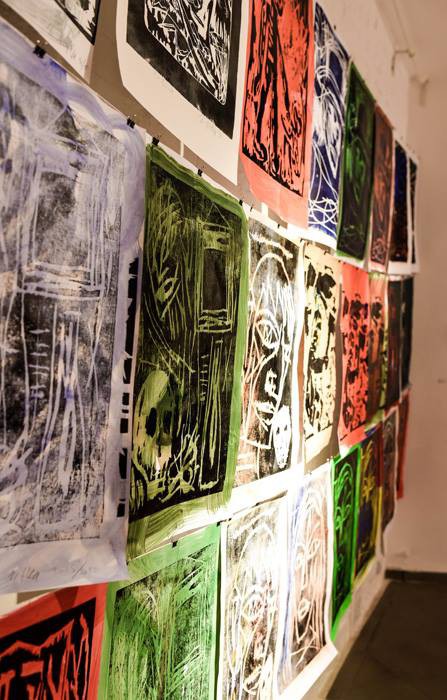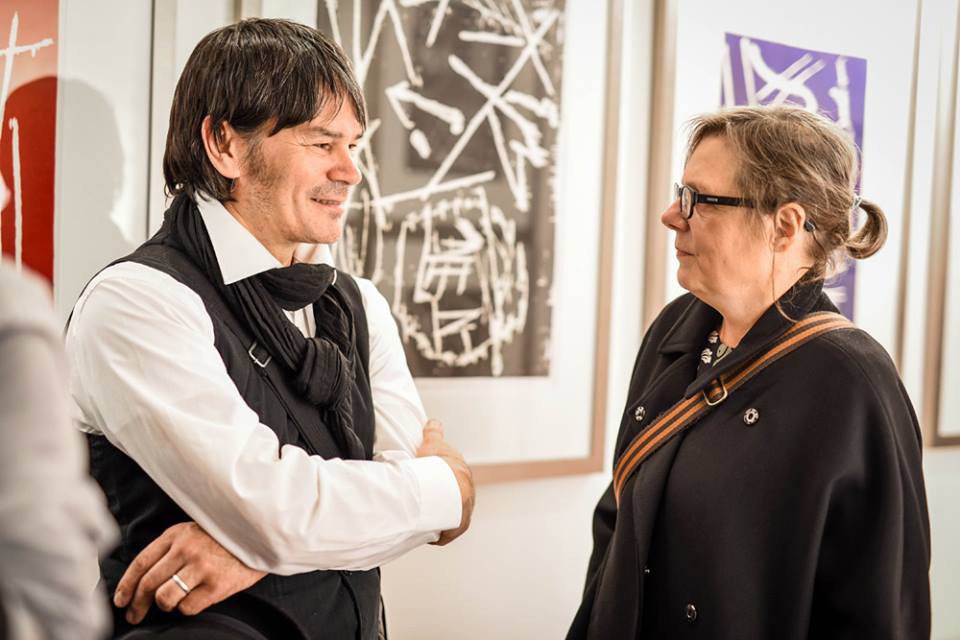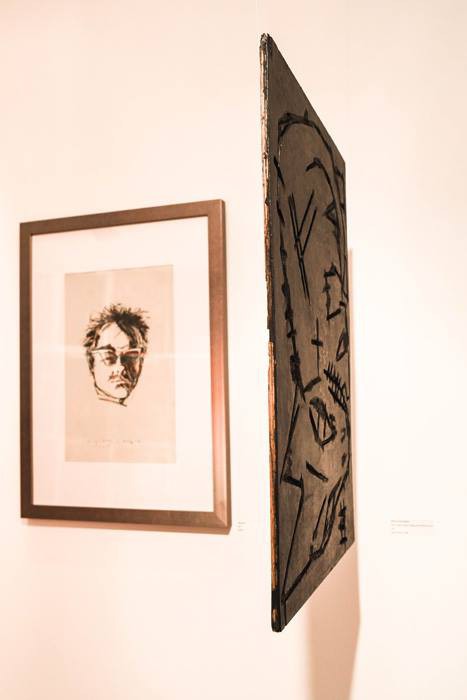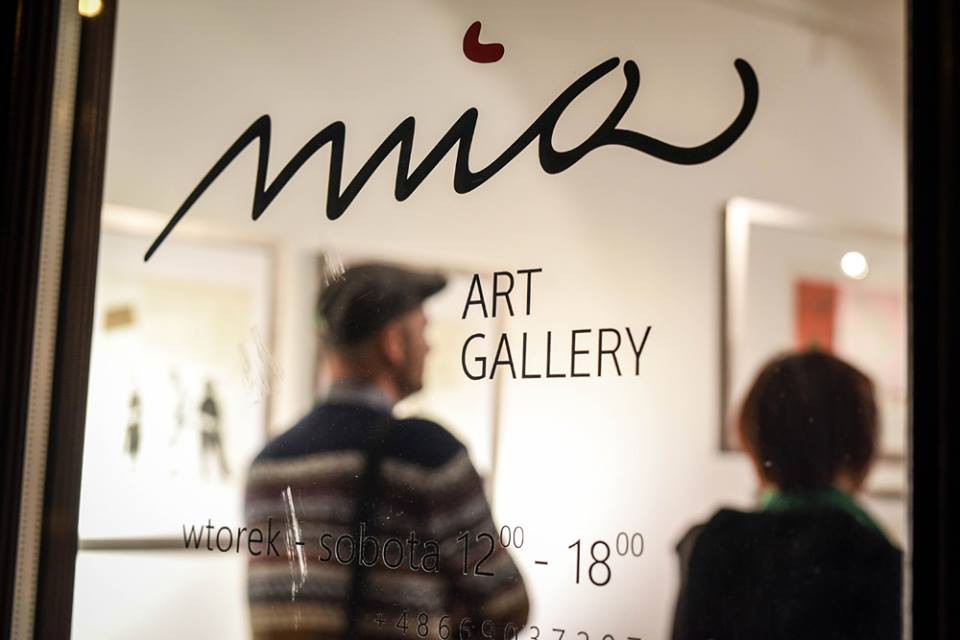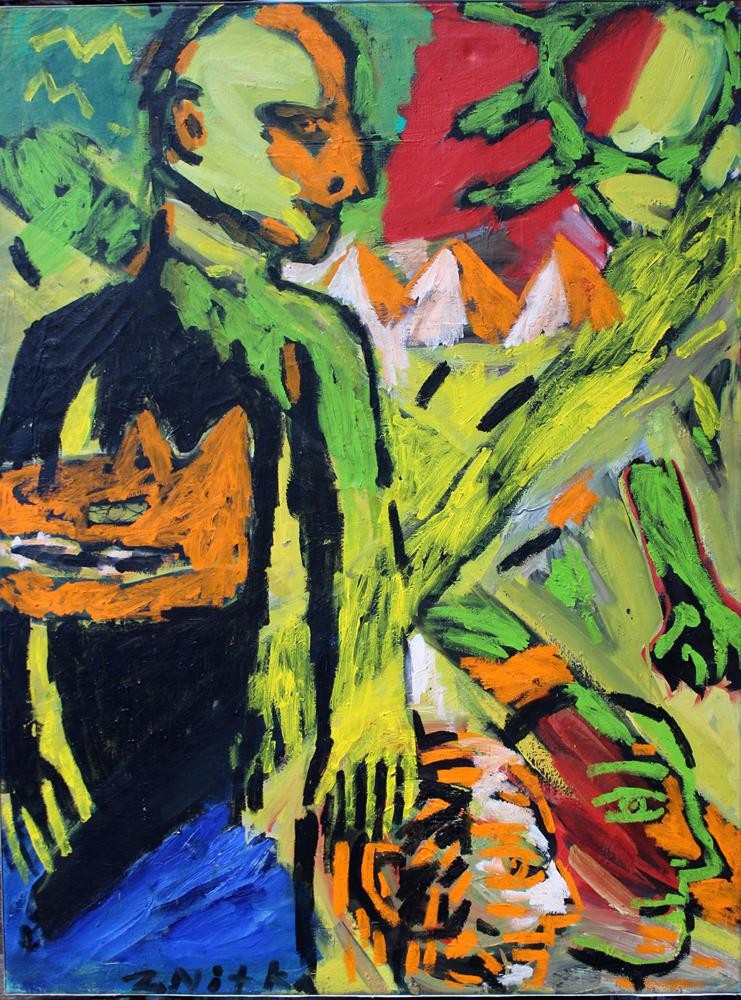About
In the work of Zdzisław Nitka – a declared expressionist associated with the Wrocław artistic circles – illustrations are a medium equivalent to painting. Referring to the work of Die Brücke artists, he most often uses the woodcut technique, achieving an original form and expression.
Nitka, who studied in the 1980s in Andrzej Basaj’s studio, initially created plaster prints, linocuts, monotypes and lithographs. His early works were kept in the spirit of the works of Paul Klee and showed a fascination with the illustrations of Jerzy Panek. The Wrocław artist also combined drawing and collage, as well as using stencils. These techniques were a preparation for the selection of his fundamental method of graphic expression, the woodcut. The use of the expressive figuration brought him recognition as early as 1987, in the form of an award for the poster for the Belgian Festival de Mons.
Nitka consciously waives workshop perfection. He is inspired by both medieval woodcut and longitudinal woodcut. He also creates his compositions from modular assembled matrix elements, which evokes the tradition of the works of Edvard Munch and German expressionists. Their works – “coarse and convulsive”, intensifying emotions – were characterised by a particular aesthetic of predatory forms, emphasising an individual and impulsive vision. This style is particularly close to the Wrocław artist, although he uses original workshop techniques, adjusting wooden matrices to modern mechanics. Nitka abandoned burins early on, and traded flat blocks of wood into hard, pressed boards. From a low, deep relief, he moved to a simplified, brutalised engraving. Steel chisels were replaced with mechanical chain saws, circular saws and high-speed blades, which facilitated a fast and deep interference in the matrix. His “woodcuts” are created to the shrill clamouring sounds of power tools and in a cloud of wood dust. The hard board, made up of many thin layers of wood, becomes furrowed under the pressure of the saw, breaking up spontaneously, and the chipping and splintering on its surface enriches the main construction lines of the printed images. The artist deliberately emphasises the anti-spatiality of his aggregated flat compositions. Light focuses mainly on white lines that outline and form shapes, while the surrounding colour – most often black – takes on symbolic value. The severity and primitiveness of these graphics brings Nitka closer to the programmatic assumptions of the expressionists: simplified form, light reduced to linear flares and flat spots, co-existing with an archaic way of imaging.
Nitka can use the “carved” matrices many times, and carefully stores them for years. The artist makes prints on coloured backgrounds of the large-format projects (including Always suffering (Zawsze cierpiący), 1999) or those more intimate (including Murderer (Morderca), 2011; Kirchner, 2012). An interesting colouristic series are the 1998-2000 Wolves – compositions limited to one symbol, the silhouette of an animal, which the artist modified with black, green broken with brown, shades of rust or yellow and blue. Other notable works are multi-coloured versions of The Eagle and the Man Clearcutting the Forest (Orzeł i człowiek karczujący las) (1999), Death in the Workshop (Śmierć w pracowni) (2005) and The Lap of Bathsheba (Łono Batszeby) (2015).
The culmination of Nitka’s experience as an illustrator occurred in woodcuts that can be described as Munch-like. They are his most interesting works, and at the same time the best in terms of technique. The Norwegian artist’s work was the most important point of reference for Nitka, as evidenced, among others, by the graphic recall of Munch’s Self-Portrait with Skeleton Arm (1895) in Nitka’s The Head of E. Munch (Głowa E. Muncha) (2003). Among other works inspired by Munch’s works are also Death and the Maiden (1998), Death in the Workshop (2005), Irony (2010) and Inger with a Dog (2011) – a composition that recalls the figure of the Norwegian painter’s sister. In the group of dark, symbolic works, the viewer’s attention is caught by Marta (2006) – a woodcut portrait of the Wrocław artist’s daughter.
The aftermath of Nitka’s graphical work are large paintings made on wooden backgrounds with a carved drawing and covered – in a painterly fashion – with thick paint (David and Bathsheba, 2015). Like many of his expressionist predecessors, Nitka is also trying his strength in fully-realised woodcarving projects. The Golem (2015) presented in the exhibition refers to Gustav Meyernik’s text, but is also a simplified sculptural-painting totem in the spirit of the works of Karel Appel and Georg Baselitz – a neo-expressionist particularly valued by the Wrocław artist.
Andrzej Jarosz
Display
